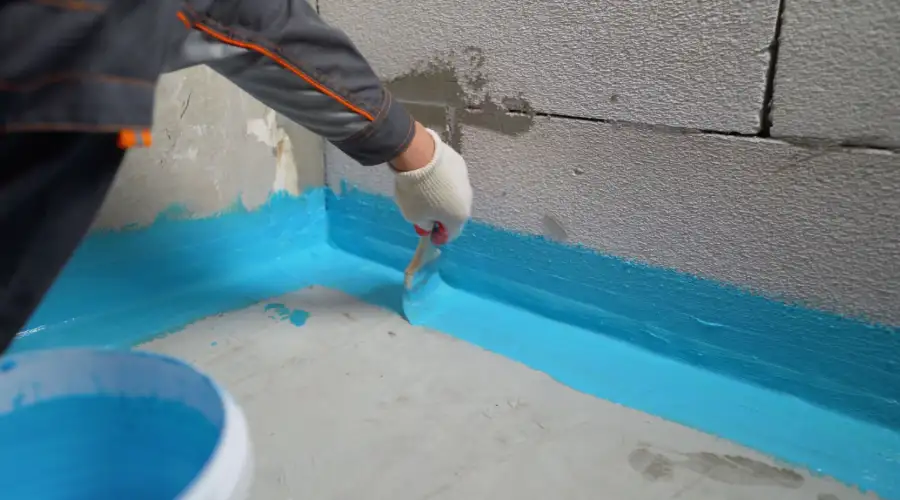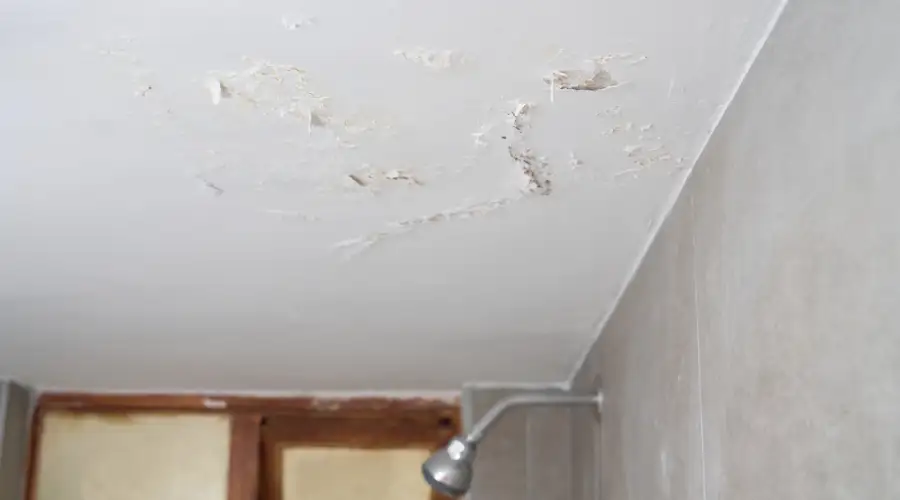India is known for heavily relying on concrete—although homes include drywall, concrete is widely used for building purposes. Research in 2023 says that approximately 375.2 million metric tonnes of concrete were used in India. Concrete flooring is prevalent in India because of its affordability, toughness, and smooth appearance. It can also be effective insulators if the proper chemicals are used. Even though it is known for its better features, a common concern with concrete floors is moisture intrusion.
If you see wet patches on your concrete floor, it may cause further serious issues like cracks and depressions in the floor. In this post, we’ll look at common causes, the significance of sealing your concrete floor, preventing moisture intrusion, and other important things to help you stop moisture from coming through the concrete floor.
Common Causes of Moisture in Concrete Floors
Here you may find the reasons behind wet patches on your concrete floor as follows:
1. A High Water-Cement Ratio
Excess water in the concrete mix traps moisture in the slab, producing long-term concerns. It is essential to maintain an optimal water-to-cement ratio of around 0.45, which is ideal for stopping moisture from entering through concrete floors.
2. Insufficient Drying Time
Concrete must be allowed enough time to dry to avoid retaining moisture and causing damage to flooring.
3. Issues with Vapour Retarders
Ground moisture may infiltrate through the concrete if the vapour retarder is broken or not present.
4. Inadequate Drainage
When grading is done incorrectly, water collects around the structure and pushes moisture into the slab.
5. Plumbing Leaks
If hidden leaks are not fixed, the concrete may soak for months and endure significant damage.
Consequences of Excess Moisture in Concrete Floors
The excess moisture in concrete floors may develop structural problems over time as well as lead to aesthetic issues as discussed here.
Structural Damage
For example, if you discover any cracks on the second floor of your new structure after several months of building the structure, it could be due to moisture intrusion in the concrete floor. This situation may result in delamination, spalling, bubbles, and cracks. Such defects will eventually compromise the integrity of the structure of the floor. From a single crack, the whole floor can continue to break within a few days or months if it is unsolved or unnoticed.
Aesthetic Issues
Moisture leads to whitish deposits, wet spots, discolouration, and staining. When the relative humidity is high, mould develops on it. The surface could also change colours due to the presence of salts and acids. Mould can be unappealing to you and may cause health complications when you are prone to allergies and respiratory issues.
Moisture management techniques ensures that concrete floors are both durable and aesthetically pleasing in appearance.
How to Stop Moisture Through Concrete Floors?
Here you can find some solutions to stop the excessive moisture seeping into your concrete floor as follows:
Dealing with Moisture Seepage
Start by removing excess humidity with fans and a dehumidifier if moisture is already leaking through concrete flooring. Along with this, applying a concrete moisture sealant will create a barrier to prevent water infiltration and stains. Sealants made of silicone can work well in places where water tends to collect, like around swimming pools.
Reinstalling the floor may be necessary to build a waterproof barrier underneath concrete slabs that do not currently have one. A vapour barrier, like plastic sheeting, is perfect to stop moisture from evaporating and rising.
How to Dry a Wet Concrete Floor?
Use wet vacuums, absorbent items like sawdust or cat litter, or increase ventilation by opening windows and doors to rapidly dry out a wet floor. To expedite the drying process, you can use a professional-grade heater or add calcium chloride.
Waterproofing Existing Concrete Slabs

To make a concrete slab waterproof:
- Make sure the surface is clean.
- After uniformly applying a concrete waterproofing sealer, allow it to dry.
- Add an additional layer for enhanced protection.
- For long-term moisture control, use vinyl membranes or polyethylene sheets.
Dealing with Wet Concrete Floors Beneath Carpet
Before installing the carpet, place a vapour barrier, such as polyethylene film, between the slab and the carpeting. To lower moisture levels, use this with dehumidifiers and make sure there is enough airflow.
When to Consult a Professional
Some moisture issues in concrete floors require professional expertise. Here’s when to seek help:
- Persistent Moisture
If DIY methods like sealing or drying fail, a professional can identify hidden problems and provide solutions.
- Structural Damage
Cracks, spalling, or delamination may indicate serious issues. Professionals can repair these to prevent further damage.
- Water Seepage

If water is rising through the slab due to poor drainage, high water tables, or missing vapour barriers, experts can install proper solutions.
- Mould Growth
Mould can develop from ongoing dampness, which is harmful to one’s health. Experts can successfully remove mould and moisture.
- Complicated Repairs
Specialised equipment and expertise are frequently needed to address issues including damaged barriers, plumbing leaks, and grading issues.
By seeking professional advice, you can avoid long-term damage, save time and money, and treat the underlying cause of moisture issues.
Preventive Measures and Maintenance Tips
Three important aspects should be addressed to stop sweating on concrete floors: temperature regulation, airflow, and moisture control. Here’s how:
Control of Moisture
To increase airflow and balance the temperatures from ceiling to floor, use low-speed, high-volume fans. By increasing surface evaporation, these fans lessen the production of moisture. HVAC systems and dehumidifiers can be beneficial, but they may also raise expenses.
Control of Temperature
To reduce condensation, keep the temperature constant. Heating and cooling systems may not be economical for long-term use, even though they help stop perspiration.
Protective Flooring Solutions
Urethane cement gives a seamless surface that can stand heavy volumes of traffic and temperature differences. It is also durable, crack-resistant, and liquid-proof.
Concrete sealers that enter the surface to fill pores and form a moisture barrier are known as penetrating sealers. They extend the life of the floor and stop cracks brought on by temperature changes.
For long-term protection, consult flooring experts to assess your specific needs and recommend the best solutions.
Conclusion
Protect your floors from excess moisture by using barriers like polyethylene sheets, epoxy sealers, or concrete moisture sealers. Ensure good ventilation and use dehumidifiers to reduce humidity and prevent dampness in concrete.
If you’re unsure how to stop moisture or suspect your floor lacks a moisture barrier, consult a professional. They can use effective methods to waterproof your slab and protect it from water damage.

